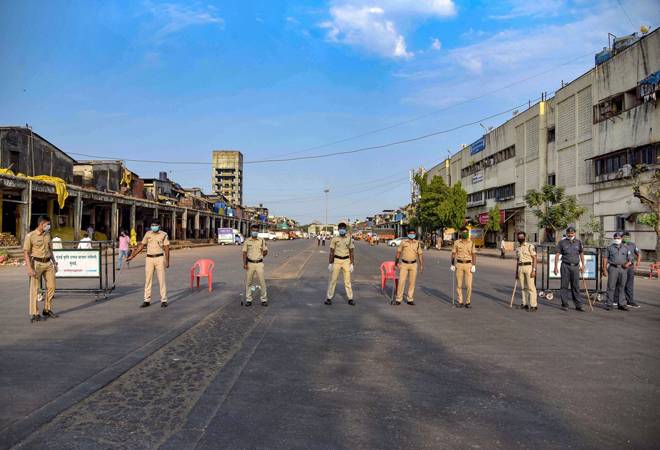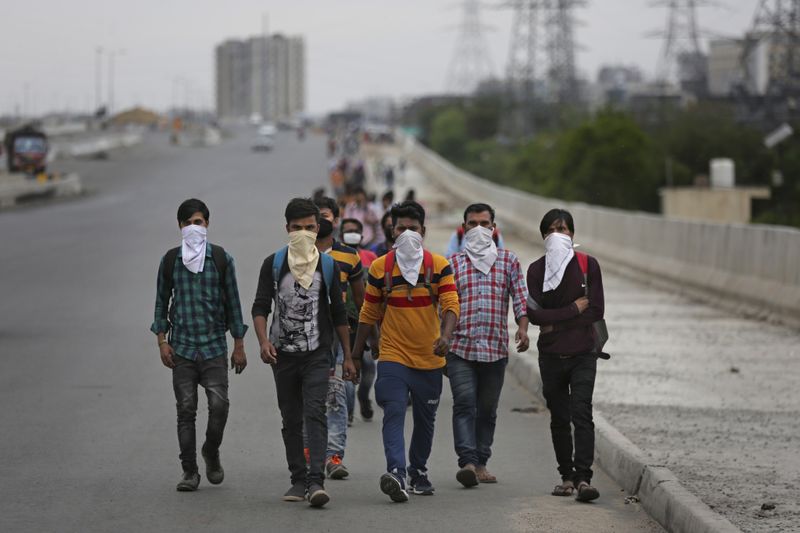Pradeep K. Panda
The COVID-19 pandemic has had severe health and economic impact in almost all countries. In the immediate aftermath, India and several other nations have prioritized citizen health over economic activity to contain the spread. The mining sector in India was poised for robust growth in FY21, on the back of rising demand from end-use sectors and fresh investments announced by the mining companies. However, the spread of COVID-19, right at the beginning of the financial year, has led to disruptions across industries.

Mining Sector fuels the economic wheels as a primary input and is a key contributor to power, manufacturing, construction and real estate sectors. Even though in most states mining was allowed even during the lockdown the effects have nonetheless been felt and may continue in the near term as the lockdown is extended. Demand in the end-use industries like power, steel, cement, aluminium, etc. has come down. Simultaneously transport and logistics are affected, limiting offtake of minerals from the mines.
The consequential effects of reduction in activity in the mining sector have been several.
- Government exchequers are expected to get affected as collection against statutory levies and taxes are lower due to lower volume of mineral production
- Government’s plan to auction new coal and mineral blocks is likely to get delayed
- MDOs/MOs are expected to face significant challenges, and
- Lastly but not the least COVID-19 has already affected the entire business eco-system especially the marginal stakeholders like small vendors/contractors, contract labourers, downstream and ancillary businesses, etc.

Mining, being the labor-intensive sector, contributes significantly to employment generation, both direct and indirect. It impacts local and regional economies in and around the mine. Considering the interdependency of the local community and larger regional ecosystem with mining, COVID-19 has already created major disruptions and is likely to lead to significant economic, environmental and social impacts. Some of the immediate potential impacts are highlighted below:
- Impact on Sustainable Development Goals (SDGs): SDG targets will be unsettled and thus also impact the overall sustainable development of mining sector. SDGs that have been impacted negatively are SDG 8 (Decent Work and Economic Growth), SDG 9 (Industry, Innovation and Infrastructure), SDG 1 (No Poverty) and SDG 2 (Zero Hunger) and positive impacted SDGs are SDG13 (Climate Action), SDG 14 (Life Below Water) and SDG 15 (Life On Land). However, sustainable development depends on both biodiversity conservation and human development and it is be possible to achieve if both co-exist.
- Disturbance in Local Business Ecosystems: It is expected that the local businesses including MSME, small contractors and vendors, skilled/semi-skilled/unskilled workers who work on contractual arrangements are likely to see reduced direct or indirect engagement, leading to reduced economic activities in primary, secondary and tertiary levels in local business ecosystem, especially severe at the downstream and ancillary levels where most are MSMEs.
iii. Impact on Supply Chain: Diminishing levels of economic activities in the short run will lead to the readjustment of supply chain and workforce. It is expected that this will put the companies at risk of re-activating the original supply chain links once various economic activities gain the lost momentum back.
- CSR and Peripheral Development (PD): For most companies, expenditure towards CSR and PD will most likely be deprioritized supported by the fact that the contribution towards COVID-19 (Contributions to the PM CARES fund, SDMA and ex-gratia payment made to workers fighting COVID-19 supported by a Board declaration) will now be considered under CSR head. This might lead to local community issues, as the expectations will continue to be there, and is safe to assume that expectations will be higher when the stakeholders will look up to the anchor mine/plant to support them to stand firmly back on their feet again.
Overall, de-growth in the Mining sector is unavoidable in Q1, and perhaps also in Q2. The economic activities are likely to gather momentum again only in H2 of FY21. In order to address the overall impact of COVID-19 on mining sector, specific actions are needed to be carried out by all concerned, especially the Governments and the business community, in order to boost demand and at the same time, to ensure that there is no supply disruption.

Considering the multi-dimensional challenges that COVID-19 has posed to the mining and metals sectors in India, it is important to devise a turnaround strategy for the short-term, medium term and long-term.
- RESPONSE phase – Short-term (next 3 months or till the time the pandemic is contained): This phase will require the stakeholders to remain patient, and at the same be time extremely agile with smart actions to prevent the extent of damage to the ‘fundamentals’ of the sector. If the ‘fundamentals’ are guarded well and kept intact with right policy directives from the Central and State Governments, the subsequent path to recovery and achieving aggressive growth over a five year period should be eminently possible.
- RECOVERY phase – Medium-term (next 6 months to 1 year): Mid-term actions should be targeted with aim for ‘recovery’ and setting realistic growth ambitions for FY22. During this phase, Governments must focus on setting the house in order through some long-standing Policy changes like identification of alternate options for mineral resource distribution and rationalisation of the tax structure, which is currently considered to be very high in India (60-65 per cent, as compared to global average of 40-45 per cent). On the other hand, companies can focus on optimizing their operating costs with adoption of digitalisation and technology enablement and focusing on value addition by diversifying into the larger part of the mine-to-mill value chain.
- RESILIENCE phase – Long-term (next 1-2 years): Long-term actions must be targeted towards broader business and economic goals. Focus on creating downstream and ancillary ecosystem of business with the backward and forward interlinkages with other industry segments will have to be driven by individual State governments with end objective of industrial promotion in the state. For example, providing “Infrastructure” status to the mining sector will open up plethora of opportunities for the sector for the next level of growth. Arranging finances in particular will become much easier with the Infrastructure status. The kind of traction Transport and Logistics sector has been able to generate after getting the Infrastructure status is there for everyone to see. Mining needs such kind of shake-up, which is long due. Another aspect could be to drive indigenous R&D in this sector, which will help in unlocking lot of value.

Government has already recognised mining as a key sector for employment, revenue generation and value addition during these unprecedented times. The reforms announced by Honorable Finance Minister during the fourth tranche of the special economic package are welcome move. The Coal Blocks Auction (Amendment) Rules, 2020 has also been notified on 18 May 2020. More such notifications and details may be awaited. The progression path of COVID-19 is yet to be fully determined. However, it is clear as soon as containment is reasonably achieved, economic activity has to restart. Mining activity is at the very start of the chain, generating primary inputs for other industries and also contributing hugely to central and state government coffers. The mining sector, being farthest removed from the ultimate consumer, will get demand signals last of all value chain participants. This may create working capital issues if not wrong asset deployment decisions. It is, therefore, important to put in the right set of measures and utilize the recovery from COVID-19 to step up economic activity and build a resilient mining sector that is ready for future challenges.
To summarize, the entire mining sector has witnessed value erosion, Government exchequers are expected to get hit badly especially when they need higher revenues to spend on health and family welfare and new infrastructure creation, Government’s plan to auction new coal and mineral blocks is likely to get delayed, MDOs/MOs are expected to face significant challenges, and lastly but not the least COVID-19 has already affected the entire business eco-system especially the marginal stakeholders like small vendors/contractors, contract labourers, downstream and ancillary businesses, etc. From the overall sector level impacts, let us now dive deeper to understand the specific impacts on few of the major minerals from the lens of end-use industry segments where these minerals are consumed.





















